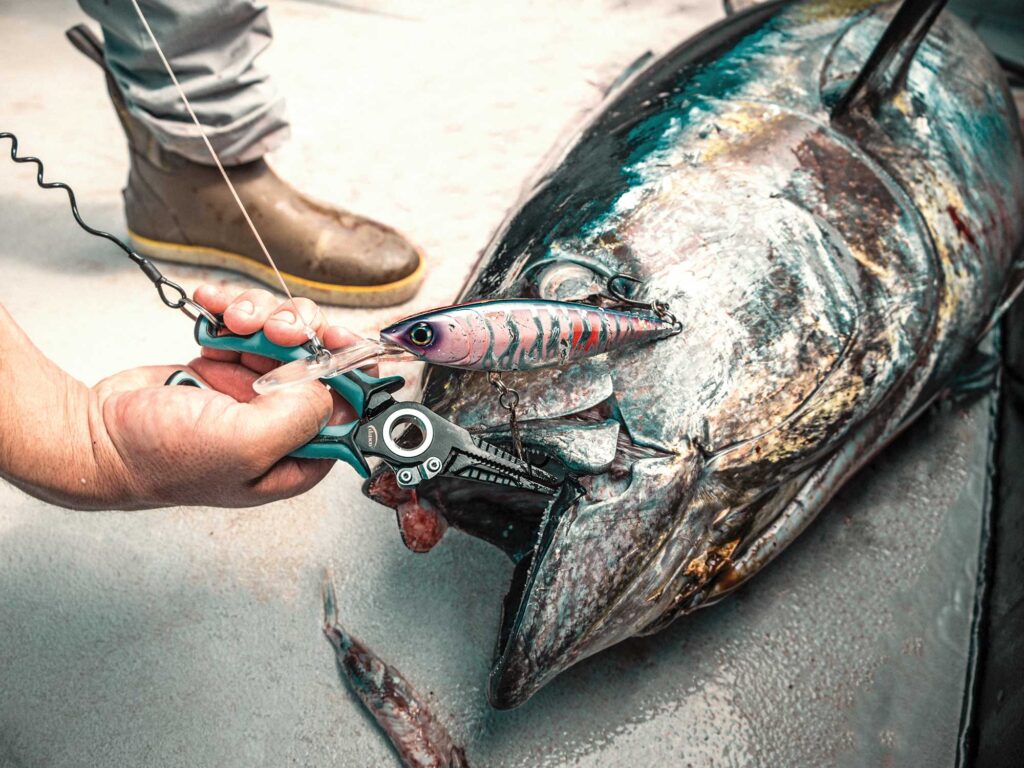
Enter the words “fishing pliers” into Google and hundreds of results fill the screen—long nose, short nose, all-purpose, compact, steel, aluminum or titanium. How do you choose the best pliers for the way you fish?
To start, break the choices into two categories: multifunction models and needle-nose pliers. Multifunction pliers combine multiple features like crimpers, a knot puller, cutters, sharpeners, and a tip designed to manipulate split rings paired with their jaws. Do-it-all pliers are great for travel, kayak-fishing and surf-fishing, when it isn’t convenient to carry a variety of tools.
But a set of needle-nose fishing pliers with line clippers are usually the best choice for anglers looking for a reliable tool to unhook a toothy fish, crush a hook barb, cut line, cinch a knot and a hundred other jobs. These pliers usually reside in a convenient sheath that hangs from your belt so they are always in reach.
Whether you choose a pair of simple pliers or do-it-all makes, there is still an overwhelming number of choices. Shopping for pliers at my local tackle shop produced a price list from less than $20 to over $300. Most of the price discrepancy is due to materials and construction.
Materials
Some of the most durable fishing pliers are forged out of solid titanium. Theis Fredrik, brand manager at Van Staal, explains, “Titanium is really hard to forge because it has low elasticity and a high melting point, so it requires skill, technology and a lot of heat to manufacture.” The result is inherently corrosion-proof pliers that are stiff, light and strong. Anglers who require bulletproof reliability out of their gear appreciate the durability of a set of titanium pliers.
The next option is aluminum. The best aluminum pliers are machined out of a chunk of 6061 T-6 aircraft aluminum. Ben Secrest, marketing manager at Accurate Fishing, explains the advantage of properly constructed aluminum pliers.
“Aluminum has a grain like wood, and knowing how to machine the part to take advantage of the inherent strength of the material takes experience and precision engineering,” he says.
Machined aluminum pliers use replaceable clipper blades and jaws made of high-carbon steel. Secrest says, “Steel is softer than aluminum, so it is easier to sharpen and provides a better grip, but steel also rusts and dulls, requiring regular maintenance and replacement.” Some pliers use steel in the jaws and lighter aluminum in the handles.
But not all aluminum pliers are created equal. Die-cast aluminum is melted and shot into a mold. The process is faster and less expensive, but not as strong or corrosion-resistant as machined aluminum. To create a barrier on the surface of the metal, die-cast pliers are anodized through electrolysis. The process protects the tool, and the bright colors and matte textures look cool.
If you use your pliers as a hammer, pry bar and ice chipper, then stainless-steel pliers are the tool for you. Steel is the least corrosion-resistant of these options, as even stainless steel will corrode in salt water, but it is tough and inexpensive. To fight oxidation, the steel is covered with a corrosion-resistant ceramic coating that helps prevent rust.
Features
The biggest trends in new fishing pliers are in design and construction. Features that used to be found only on expensive pliers are trickling down to less-pricey models. Dena Vick, marketing director for Danco Pliers, points out, “Replacement cutters that easily cut through braid, fluorocarbon and mono are a pretty standard feature that you didn’t find on older pliers.”
And top-of-the-line pliers continue to push the envelope of modern technology. Vick adds, “Our latest development is AI supercomputer-designed pliers that are five times stronger than other titanium pliers and weigh only 3 ounces.”
The weak point on all pliers is the spring-loaded hinge where the jaws meet the handles. To solve the problem, the best fishing pliers protect this vulnerable area from moisture, grit and salt. Bubba recently released a new pair of stainless pliers with a shielded spring. Marketing manager Trent Rodgers at Bubba says, “The hidden spring-loaded concept makes our pliers very easy to use without risk of an external spring being exposed to the elements and getting hung up.”
To improve grip and ergonomics, some pliers have rubber-coated handles, angled jaws or molded grips. Bubba gave its new fishing pliers the same oversize handle material as its popular fillet knives. Rodgers says the variety of shapes and sizes “offers some level of customization.” That means you can test out a dozen different handle-and-jaw configurations to find a pair of pliers that fit your hand like a glove.
Highlighted Products
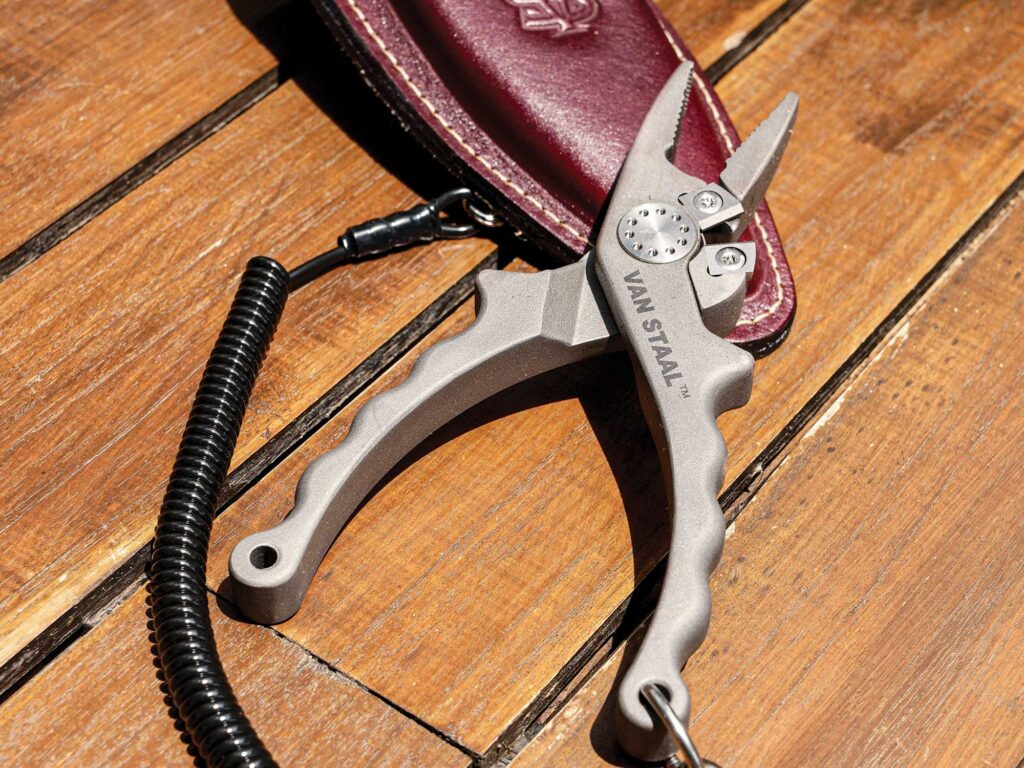
Van Staal pliers, which are developed and tested chasing trophy striped bass in the New England surf, can survive complete immersion in salt and have the gripping power to remove a 7/0 hook from the jaw of a 50-pound bass. Constructed out of forged titanium with replaceable carbide cutting jaws, the Van Staal pliers are stiff, light and inherently corrosion-proof. The super-hard titanium means the Van Staal jaws remain rock-hard for years of service.
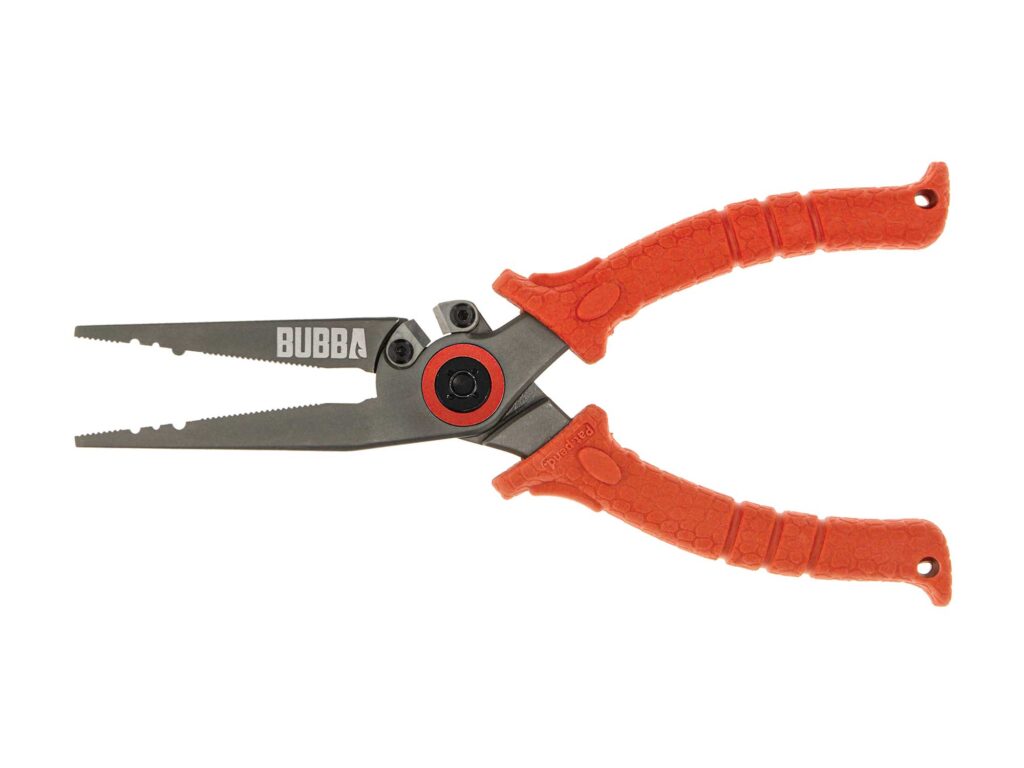
Bubba 8 ½-inch stainless-steel pliers have all the features you expect from do-it-all fishing pliers, including a line and split-shot crimping tool and replaceable carbide cutting jaws. To fight corrosion, the stainless-steel jaws are coated with titanium nitride. For an unmatched slip-resistant grip, the oversize rubber-coated handles produce more pressure and increase control for little jobs and big fish.
Read Next: How to Choose a Fillet Knife
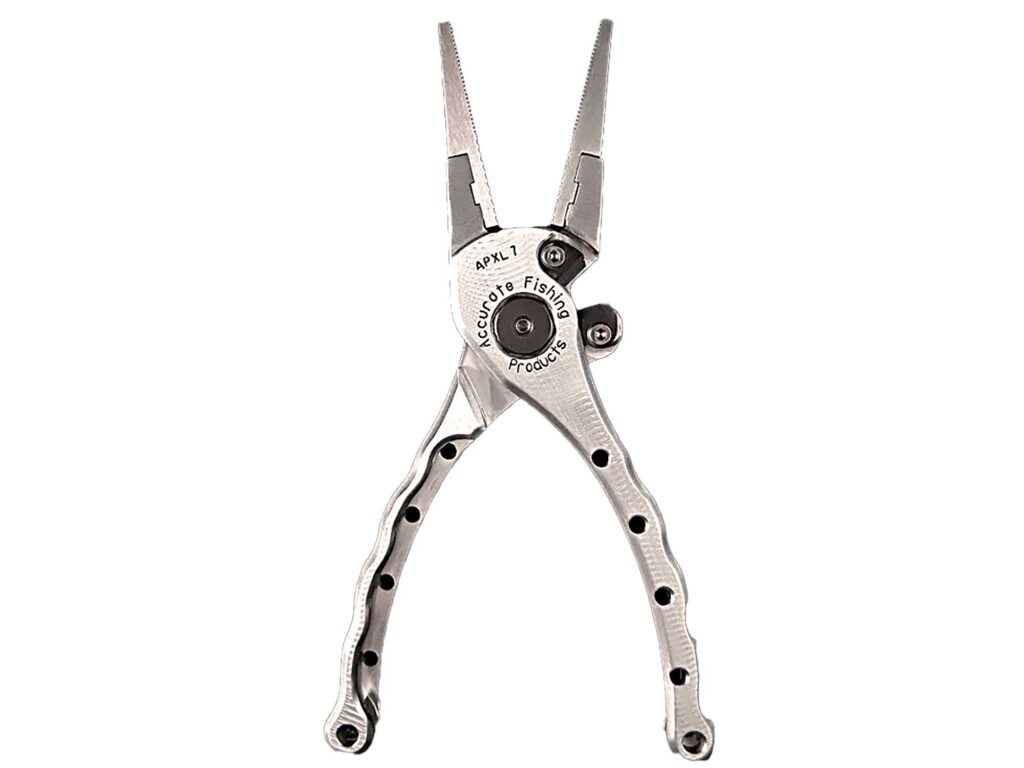
Accurate designed the Piranha pliers to complement its precision-engineered twin-drag fishing reels. Built out of the same 6061 T-6 aircraft-grade aluminum, the pliers are reinforced with replaceable steel jaws and clipper blades. First released in 2003, the Piranha pliers have a timeless machined-aluminum frame that is drilled and shaved to reduce weight.
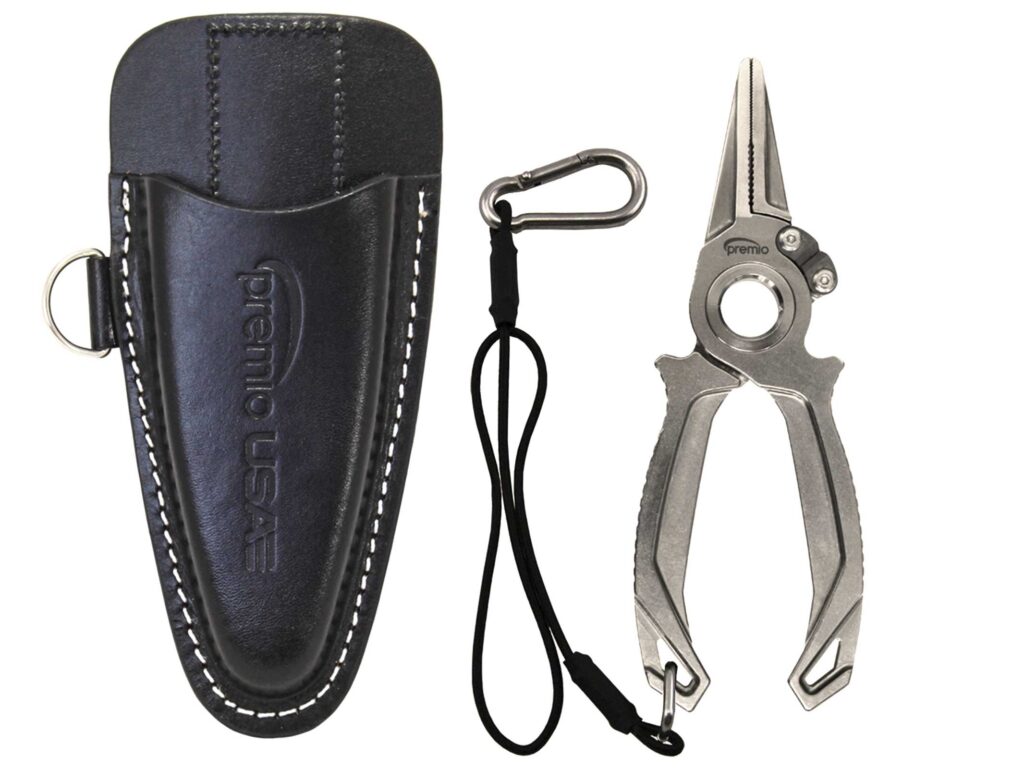
Danco partnered with legendary NHRA drag-racing pioneer Don Schumacher to build the 6.5-inch Premio USA pliers. Starting with input from thousands of customers and pro anglers, Danco designed the Premio to be comfortable and powerful all-around pliers with replaceable cobalt-titanium cutting blades. Then Schumacher Racing stepped in to machine the Premio to the same precision specs as its titanium race-car components.
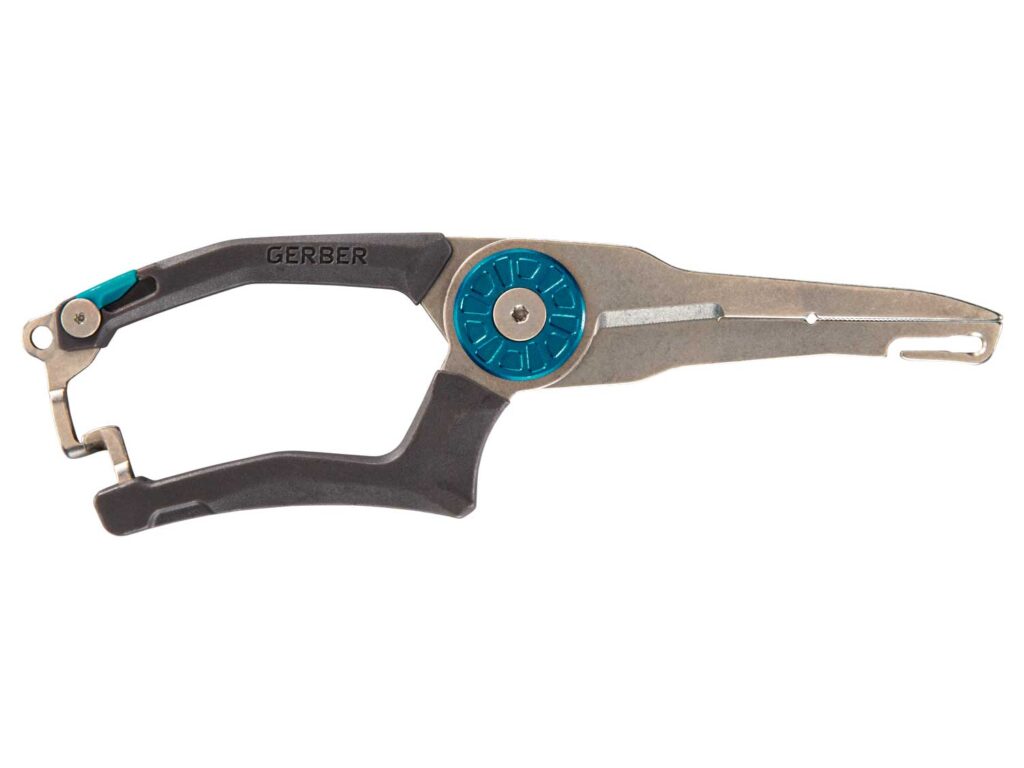
Gerber Hemopliers are a hybrid of hemostat and long-nose pliers. The long, flat jaws and ergonomic design produce incredible power to wrestle a hook out of a tarpon’s jaw, with the precision to crush the barb on a tiny No. 4 hook. The jaw tip is hooked to tighten knots, and the handle has a stowaway spike to clear paint and epoxy out of a hook eye. A spring-loaded hinge opens the pliers, and a unique compression lock keeps the jaws closed.
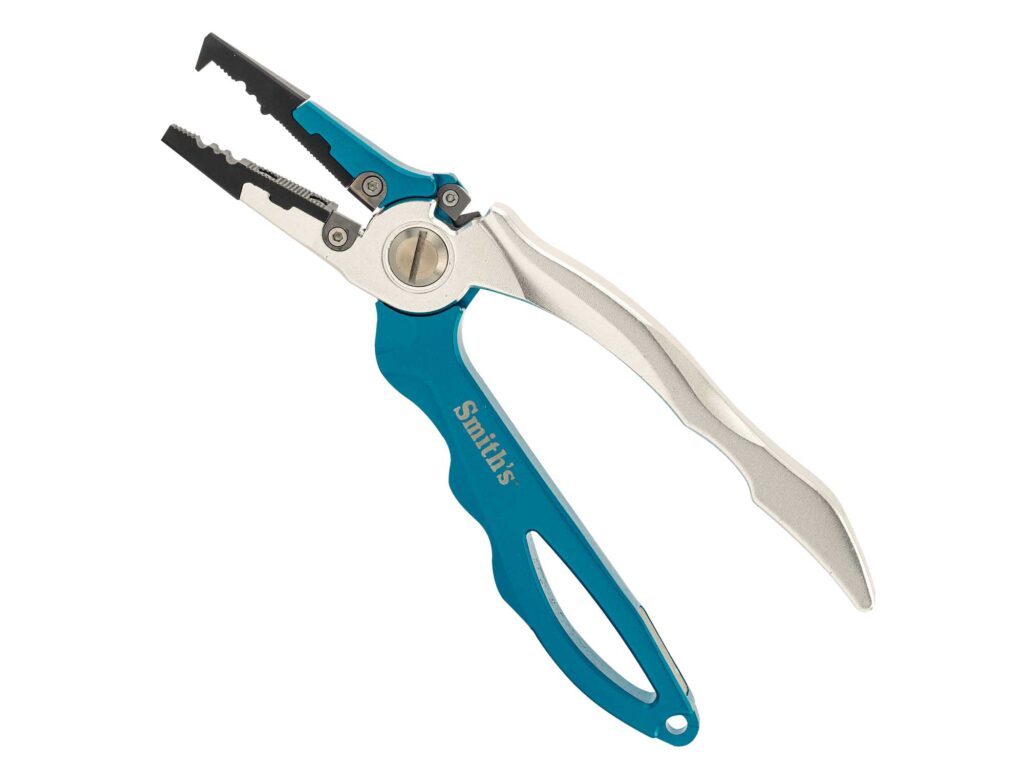
Smith’s Regal River fishing pliers do it all at an affordable price. The list of features is long, including a replaceable cutter and jaws, a split-shot crimper, a split-ring tip, and a hook and knife sharpener. Made out of high-grade 6061 aluminum with a corrosion-resistant coating, the Regal River is designed to last a lifetime.









